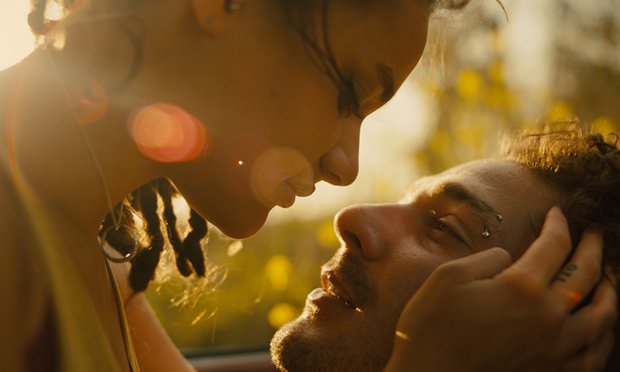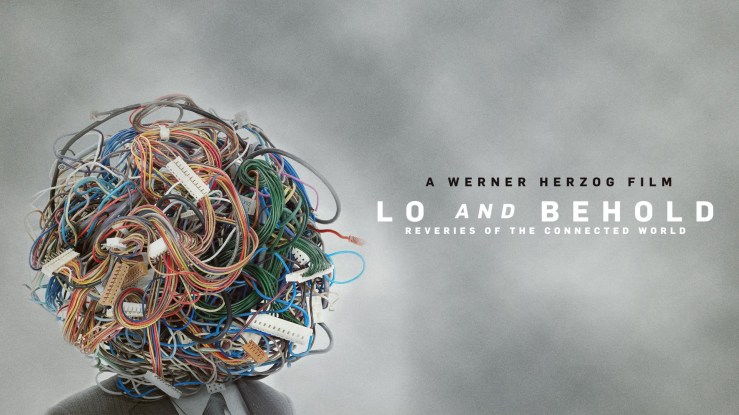
The BFI’s 2016 London Film Festival officially screened its final items on Sunday the 16th, however I still have film impressions to deliver. I watched Andrea Arnold’s three hour epic, American Honey (2016), recipient of the Cannes Jury Prize, as part of the festivities one frosty Saturday evening at Hackney Picturehouse.
The film begins in a manner that completely negates traditional Hollywood expectations of a theatrical experience that stretches as long as it does. But then again, Arnold can never be accused of creating ‘mainstream’ work. Her Oscar award-winning short, Wasp (2003), is a portrait of the overwhelming grimness of single-motherhood in effluent areas of the UK. Her first feature film, Red Road (2006), also honoured with the Cannes Prix du Jury, is an edgy investigation into concepts of voyeurism, haunted histories, grief and revenge. Naturalism of camera and performance, Dogma 95-esque inflections, saturate her oeuvre and distills into a painful humanism that one simultaneously wants to avert their eyes from but finds themselves unable to.
American Honey is no different in its approach to affective honesty. Star (played by the formidable Sasha Lane – an amateur actress Arnold discovered on the beach) is rummaging around a dumpster. The entirety of her body, clad in barely-there attire, is involved in the process. She is searching for sustenance, or rather just something to eat, to give the two children accompanying her. As is a trend throughout, the finite details of whose kids these are and why Star has been charged with the responsibility of caring for them remains amorphous. Hints are provided but specific truths of character and past will continue, for the most part, to be swathed in mystery. The viewer must collect pieces of information dropped into peripheral dialogue to formulate an impression of who they are watching; the reasoning that has informed these personas’ actions and demeanours. This vagueness implies that the audience is merely dropping in for a brief ride along their journey. The nebulous nature of their tales makes them at once specific while also evoking a sense that these people populate the world all over.
After exposing Star’s domestic situation as one filled with unfairly mature duties, coupled with a sexually abusive family tie, she decides to join a travelling troupe of magazine-punting teenagers in an effort to shatter her parental-like restraints and follow their dark and brooding manager, Jake (played by Shia LeBeouf). This ragtag team of misfits, each individual with versions of trauma and neglect that seem ubiquitous yet unique, drive around Oklahoma in a minivan selling publications. As Arnold addressed in her Cannes panel earlier this year though, in an age where hard copy is becoming outdated, these subscriptions are more of a guise for buyers investing in the people peddling them. Krystal, acted by Riley Keogh (known as the lead in The Girlfriend Experience or Elvis Presley’s granddaughter), is the owner of the company and is the capitalist reminder that they need to use the entirety of their arsenal of personal tools and physical assets to make a buck: lie, plead, expose yourself in the name of the dollar. “If you’re not making money, I’m not making money”, she warns Star as she stands strung-up in a patriotic-themed bikini while Jake rubs self-tan onto her thighs. The threat is obvious and without sympathy: lack of earning will land you back on the street.
Hopping from one grungy motel to the next, the story grapples with the literal and figurative fluidity of a young girl attempting to break free from her social and economic confines. Star’s peripatetic lifestyle is enhanced by the organic feeling camera work conducted by Arnold’s usual cinematographer, Robbie Ryan. Working in their standard 4:3 aspect ratio, Ryan is able to capture and contrast the mundane textures of life on the road, rolling through bleak industrial and suburban landscapes, with the sun-soaked wonder of the wilderness that borders them.

Star is as flare-filled and vibrant as these nature scenes (scenes that offer a reprieve from the direness of city living). Her name, however, recalls the nation’s flag and jingoism – a symbolic reaching for the twinkling lights ahead (or the American Dream). But the film rather unceremoniously peels back the layers of American society to reveal a system that has ultimately failed its people. Arnold’s social realism is reminiscent of Ken Loach, her poetic lyricism of Lynne Ramsay, however her style is very much her own brand. She exposes the gritty poverty, and its brethren such as drug abuse and malnutrition, that belies the simulacrum of an ideal USA. At the start of the film, a bleeding raw chicken, left out in the heat and prodded with a fork as a plaything, is continually returned to as visceral symbol of a life of paucity and unhealthiness. Images such as these juxtapose Star and Jake entering a wealthy home where a pile of overflowing birthday presents (in amongst them is Kim Kardashian’s selfie book) intended for a spoiled preteen girl confronts them. The excess is so obscene that it acts as a metaphor for the greater discrepancy of wealth distribution at large where a handful of pockets are bulging, straining to burst, while the rest are starving and meagre.
American Honey is brimming with brio and creates a charged atmosphere of tension that seems to be on the constant precipice of explosion. Whether its the brazenness of a female protagonist who continually puts herself into risky or possibly dangerous situations, the backtrack of aggressive hardcore hip hop, the sexual attraction between Star and Jake, or the combination of these elements, the film achieves a high level of energy throughout despite its expansive length. Hormones are ablaze in these characters. Unsure of how to manage emotions and without adult supervision, the magazine-sellers are left to their own devices like Peter Pan‘s Lost Boys. Ritualistic fights akin to another literary link, The Lord of the Flies, ensue amongst the hodgepodge family. Drinking and drugs anaesthetise them from the harshness of their reality. The overt sexualisation of young female bodies plays out the social economy of their restrictive world – one of financial dearth and engendered oppression. Despite the negativity that surrounds Star and her ilk, the movie is redemptive and hopeful. It breathes life into sepia-toned cliches of experience tinged with deprivation. It instead provides fully-coloured portraits of personas with rich inner-lives. The film is unconventional in myriad ways, however there are a few scarce moments where its alternative nature folds in on itself and becomes overly trite or profound, such as a typical angry chair bashing by jaded loves, quaint unrealistic encounters with bears and maudlin singing sessions with group members. Overall though, the performances are gripping and solid, the run-time justified and the narrative unusual: a charming watch.

